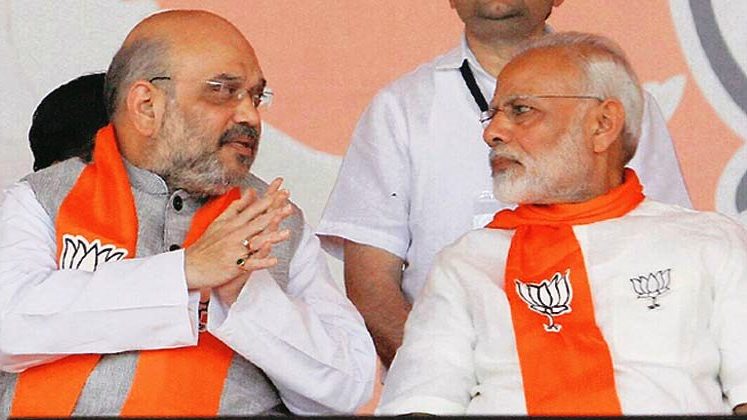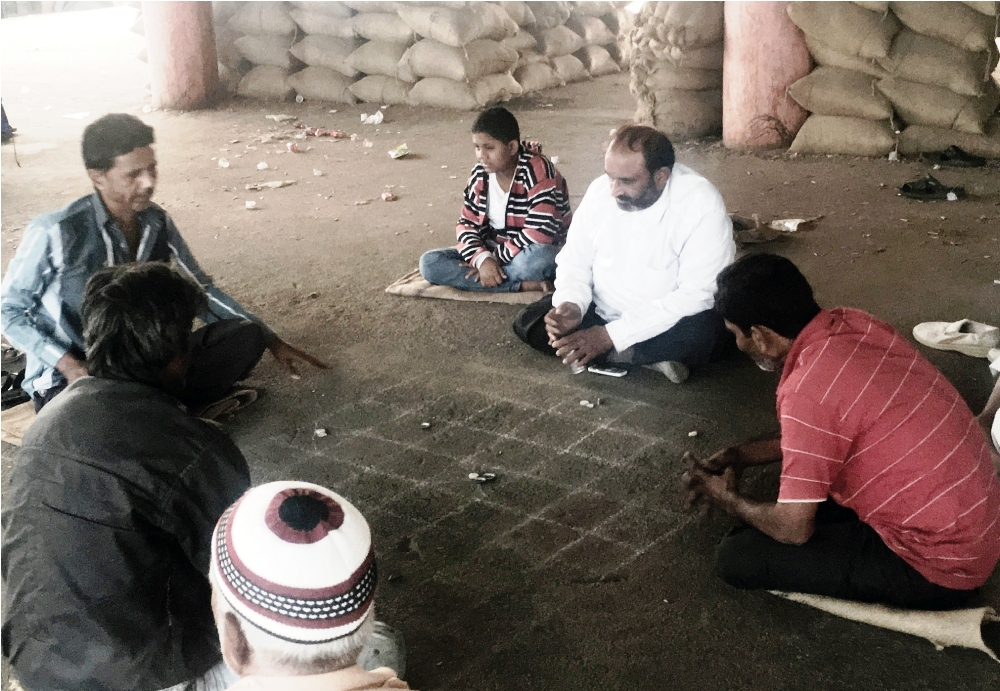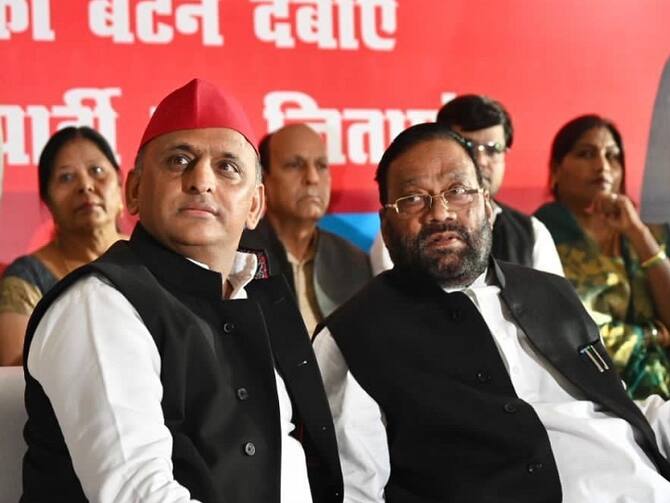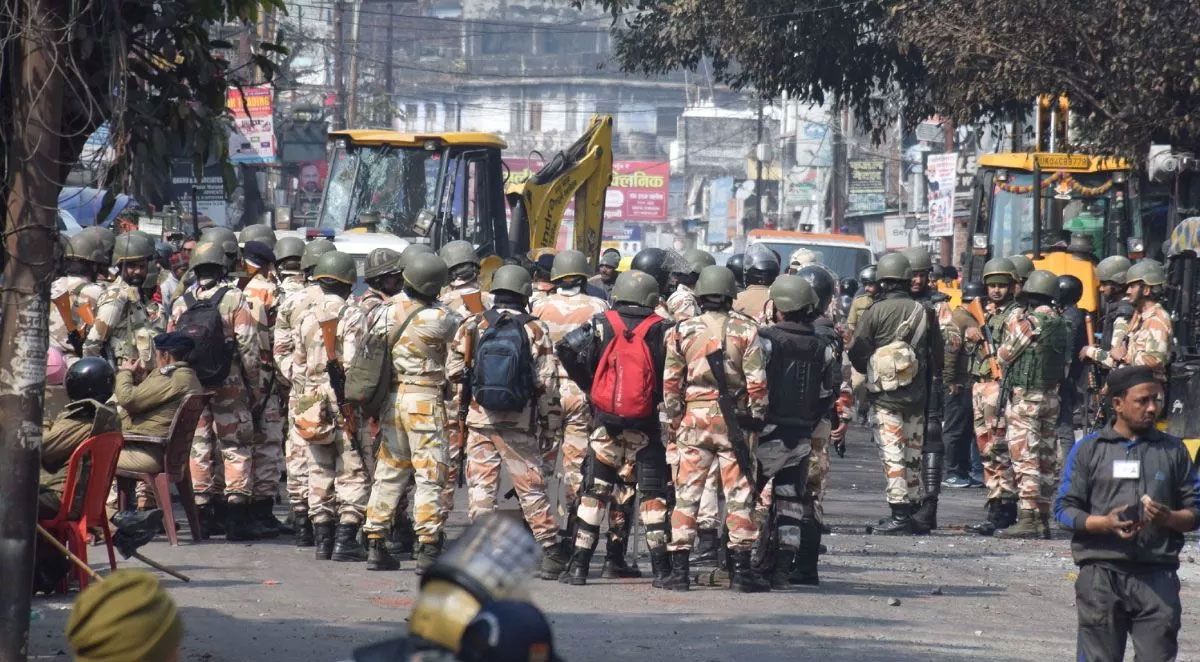The middle-aged owner of a small hotel next to the rail station in Surat, dressed in a neatly pressed white shirt and slacks with a tilak on his forehead, certainly looked the part of a Gujarati Bharatiya Janata Party (BJP) supporter. He represents the urban capital class that one usually associates with the support base of the BJP — part of a seemingly stable, impenetrable combination of caste groups under the banner of Hindu identity that has returned the BJP to power for the last 22 years. Although the hotel owner had voted for the BJP his entire life, his faith was now shaken, “How long can you fool people? Have you seen the movies? Throughout the movie, the villain is outsmarting the hero. But in the end, the hero always wins. The BJP is a villain.” Frustrated with recent economic reforms that have hurt his business, the hotel owner, from the economically powerful Patidar community, would be switching allegiances to the BJP’s chief opposition, the Congress.

Despite the hotel owner’s explanation, maybe this was simply an assertion of his Patidar identity. Over the past two years, Gujarat has been rocked by a Patidar agitation led by the politically precocious Hardik Patel (at 24 years old, he is still too young to contest as a candidate in this election). The agitation demanded government employment reservations for the Patidars under the quota reserved for other backward castes (OBCs). In late 2015, Hardik Patel was jailed for his role in leading the agitation; in the aftermath of the jailing, the movement turned violent and clashes with police reportedly led to the death of at least 14 young Patidar men.
This has raised the possibility of large-scale defections from the BJP by the Patidars, who used to make up a significant proportion of BJP’s core support.
Perhaps more surprising is Hardik Patel’s transformation from caste leader to mass leader — of the sort the Congress has consistently failed to produce in Gujarat. While Patel remains unaligned with any political party, he is actively campaigning against the BJP. Ultimately, the Congress will be the beneficiary of any traction gained by Patel’s campaign. In a 6 December 6 interview with Mahesh Langa for The Hindu, Hardik Patel summarized his grievances, “Not one section is happy with the government here except a tiny one which benefited from the BJP’s crony model. There are no jobs for youth, farmers are crying for better prices for their produce and longer power supply, the law and order situation has worsened, and education is expensive.” Gone were the Patidar-specific demands that characterized Patel’s rise to popularity. This shift in rhetoric towards the small traders, working class and the rural poor opens up the possibility of a much broader coalition of support behind Patel and, thus, the Congress.
In the 2012 state election, the BJP held a 9-percentage-point lead on the Congress in Gujarat, and, this lead had jumped to 26 percentage points in the national elections of 2014. If the Congress is to erase such a massive advantage for the BJP in Gujarat, it will have to rise beyond simple caste and religious calculations in the state. As the recent Uttar Pradesh (UP) election showed, the appeal of a strong Hindu identity can create coalitions across caste groups under the banner of the BJP. As we argued during the UP election, this BJP strategy is particularly effective against parties that are seen as patronizing specific caste and religious communities, ie, “vote bank politics”. But a coalition built around appeals to the small traders, working class and rural poor – broadly a class coalition rather than a caste coalition – has the potential to generate a challenge to BJP dominance in the state.

Other popular young caste leaders like Alpesh Thakor (Thakors) and Jignesh Mewani (Dalits) have appropriated similar class-based rhetoric. Even though there is often ground-level friction between Patidars, Thakors, and Dalits, class-based rhetoric engenders the possibility of forming a coalition across these caste groups.
The state of play in Gujarat
The BJP came to power in Gujarat for the first time in 1995 under Keshubhai Patel, after which it has yet to relinquish control. Their electoral performance over this period has been remarkably stable, with the BJP never winning less than 115 (2012) or more than 127 (2002) of the 182 assembly constituencies in the state. In 2012, the BJP only had a dip of one percentage point in vote share and two fewer seats as compared to 2007. Even though the Scheduled Caste (SC) population is purported to vote against the BJP at higher rates, the BJP secured 10 out of 13 seats reserved for SCs in 2012. By contrast, the Congress has held sway in Scheduled Tribe (ST) reserved constituencies, with BJP winning only 10 of the 27 seats in 2012 (although there are reports that ST support may be shifting towards the BJP). By these standards, 2014 national election is a major outlier.
The BJP’s vote share jumped by 12 percentage points, with the BJP winning 162 of the 182 assembly segments in the election. While one might be tempted to dismiss the 2014 numbers, many states, like UP, have shown that the 2014 trends have relevance for subsequent elections.
Since the early 2000s, originally with Narendra Modi as chief minister of the state, Gujarat has embarked on an ambitious plan of economic growth, the so-called “Gujarat model of development”. This model entails aggressively courting industrial growth through a pattern of special economic zones (SEZs) that offer favourable land prices and tax status to industrialists. Gujarat is now one of the more urbanized states in India and was the fastest urbanizing state from 2001 (37%) to 2011 (44%). One of the major political achievements of BJP government has been to dampen urban-rural conflict during this period of rapid urbanization. The remarkable stability of electoral outcomes suggests a stable winning coalition of voters – perhaps an outcome of the heightened Hindu
identity derived from communal violence against Muslims in 2002 while Narendra Modi was chief minister. Whatever the reason, rural disenchantment is now more visible in Gujarat than ever before. In the next section, we explore the reasons for this emerging urban-rural divide.
Rural Disenchantment
In Ahmedabad district, about an hour outside of the main city, we met an upper-caste Darbari (Rajput) farmer who complained that the market price for cotton had dropped from about Rs 1400 per 20kg bundle, during Congress rule at the Centre, to about Rs 950 per bundle (these numbers are consistently reported across Gujarat). Sharp drops in market prices for two most prevalent crops in Gujarat – cotton and groundnut – coupled with financial distress caused by notebandi (India’s recent demonetization exercise) have sown the seeds of anger across rural Gujarat.
After 15 years of voting for the BJP the Darbari farmer has seen enough; he has switched allegiances to the Congress this time. But why blame the BJP? After all, even the farmer admits that the market price is a function of market demand, and what exactly is the government to do if the market demand drops? The answer is complicated, but it ultimately boils down to a responsibility of the Centre to make sure market prices do not drop to this extent – an expectation derived from the historical willingness of the government to interfere in agricultural markets. A shopkeeper in Bhavnagar is more explicit about the relationship, rhetorically asking, “Who else but the government decides the market demand?” This goes beyond setting sufficiently high support prices for farmers, it involves the control of import-export markets. An agent at a local wholesale agricultural market (mandi) who purchases crops from farmers concurred with this position: “There is enough demand within India for groundnut to keep the prices high if the government chooses the correct policies.”
This points to the extraordinary challenges for crafting economic policies that foster economic growth without putting the country’s significant proportion of farmers at risk. For instance, keeping cotton prices low decreases the total cost of production for the textile industry, making such exports more competitive. Government intervention in crop prices as well as export regulations get passed on to the consumer and can contribute to price inflation. But why has the anger come out now? Narendra Modi’s vaunted “Gujarat model of development” has been actively pursued since the early 2000s when he was chief minister of the state, and the BJP has consistently been re-elected without this scale of rural disenchantment.
Somewhat counter-intuitively, the recent anger may have a lot to do with the Congress being out of power. The implementation of the Gujarat model before 2014 coincides almost perfectly with Congress rule at the Centre. The Special Economic Zones Act, making land acquisition easier and labour laws less strict, was passed by Gujarat’s assembly in 2004. As Christophe Jaffrelot has documented in a series of newspaper articles in The Indian Express, the investments resulting from the Gujarat model were not particularly geared towards job creation and the recent avatar of the BJP is broadly associated with an “urban consumer bias”. But the Congress government between 2004 and 2014 had a very different reputation, demonstrating a willingness to protect crop prices and creating jobs throughout the countryside through the Mahatma Gandhi National Rural Employment Guarantee Scheme (MGNREGS). While the BJP aggressively pursued economic growth at the state level, the Congress provided a social safety net to those adversely affected by the Gujarat model. Many of the farmers we met explicitly blamed the Modi government at the Centre for their recent troubles and pined for the days of Congress rule. As the Darbari farmer outside Ahmedabad noted, “[Former Prime Minister] Manmohan Singh is world-famous. Unlike those in this government, he knew his economics.”
Of Caste and Coalition
The Patidar community is largely split between the Leuva and Kadva subcastes. As Hardik Patel is Kadva, and given the sometimes-contentious relationship between these subcastes (the Leuva subcaste is often believed to be wealthier and of higher social status), a natural question is whether the Patidar agitation gained support across the larger community. In order to get a sense of the impact of the Patidar agitation, we visited with urban traders from the Leuva subcaste congregating roadside around food stalls on the outskirts of the city of Surat. This represented the portion of the Patidar community most likely to remain with the BJP, especially given that the BJP won 16 out of 18 seats in Surat district in 2012. To a person, while acknowledging the differences between Leuva and Kadva, they pledged allegiance to the larger Patidar identity, and a significant percentage said they would switch allegiances to the Congress this time.

This sentiment was confirmed by a BJP worker in Banaskantha district, who complained that Patidars had mobilized as a community and wouldn’t even let BJP canvassers near their houses. A voter from a different caste community summed up the role of the Patidar vote in the election succinctly: “A Patel [Patidar] always votes for a Patel first. The only difference in this election is that if two Patels are contesting against each [from the BJP and Congress], then they will support the Patel from Congress.” If indeed caste identity has become the primary driver for Congress support among Patidars, then there is a serious risk of counter-mobilization towards the BJP, as the Patidars are a dominant community disliked by many other caste groups.
We also visited Radhanpur constituency, where Alpesh Thakor, leader of the Kshatriya Thakor Sena, is contesting the election on a Congress ticket. As a nod to the strength of the Thakor population in the constituency, the BJP has also fielded a Thakor candidate.
In a village on the outskirts of town, we met a young Thakor autorickshaw driver who would be supporting Alpesh Thakor due to his work in the villages during the recent Gujarat floods. He made clear distinctions between national and state politics: “[Prime Minister] Modiji is like Mahatma Gandhi to me. He is a great man. But the people under him here in Gujarat are crooked and do nothing.”
He further complained that the agents at the mandi who buy jeera (cumin) – the main agricultural product in the area – are largely Patidars and refuse to give Thakors a fair price, instead showing explicit favouritism towards other Patidars. But when pushed on what he thought of Hardik Patel, the young autorickshaw driver responded, “Naturally, he is doing work for his samaj (community). But he is a good man, and he is with Alpesh. My issue with the Patidars is different.” While there is often friction between Thakors and Patidars, this conversation demonstrates that (at least for some portion of the population) the sort of language being employed by young caste leaders has the capacity to stitch together disparate caste communities. Here, the various leaders are using caste identity and caste networks as a tool of mobilization for more general demands, rather than as a tool of caste patronage. Caste patronage consists of the explicit targeting of benefits to particular caste groups – which is far more susceptible to counter-mobilization.
This is not to say that the counter-mobilization across castes isn’t taking place under the umbrella of Hindu consolidation for the BJP. Nowhere is this more evident than Vadgam, from where Dalit leader Jignesh Mewani is contesting the election as an independent candidate (with Congress support), much to the chagrin of many Congress party workers in the area. Traditionally, a safe seat for Congress with a large number of Dalit and Muslim voters, Vadgam is reserved for Scheduled Caste candidates, and BJP has fielded a defector from Congress who seeks to unite disaffected Congress supporters, a share of Dalits, and a large reservoir of non-Dalit Hindus. Towards these ends, Mewani’s convoy has been attacked during campaigning and BJP president Amit Shah has branded him an “anti-national”.
If the Congress is to seriously weaken or beat the BJP in this election, it will have to move past this game of caste, religion, and counter-mobilization. As a retired Darbari government worker in Bhavnagar district exclaimed, “Our problem is Ram. One mention of Him, and we all run behind Modiji. He speaks of Ayodhya and Khilji. Khilji is dead. I fell for it for the last 15 years. Not this time; I’m voting for Congress.” The final few days of the campaign have taken on a toxic tone, as BJP leaders have openly engaged in religious polarization in their speeches. After 22 years in power, the BJP controls most of the state’s sources of patronage, such as dairy cooperatives, and Prime Minister Modi remains popular. As its Gujarat model of development has come under attack, the BJP has once again turned to Hindu identity to build a large electoral coalition. It remains to be seen whether Congress can turn the tables on the BJP and rally a sufficiently large coalition around class identities this time.
This is a report originally published by the Centre for Policy Research, New Delhi. It has been republished here with the authors’ permission.
Forward Press also publishes books on Bahujan issues. Forward Press Books sheds light on the widespread problems as well as the finer aspects of Bahujan (Dalit, OBC, Adivasi, Nomadic, Pasmanda) society, culture, literature and politics. Contact us for a list of FP Books’ titles and to order. Mobile: +919968527911, Email: info@forwardmagazine.in)
The titles from Forward Press Books are also available on Kindle and these e-books cost less than their print versions. Browse and buy:
The Case for Bahujan LiteratureThe Common Man Speaks OutMahishasur: A people’s hero





